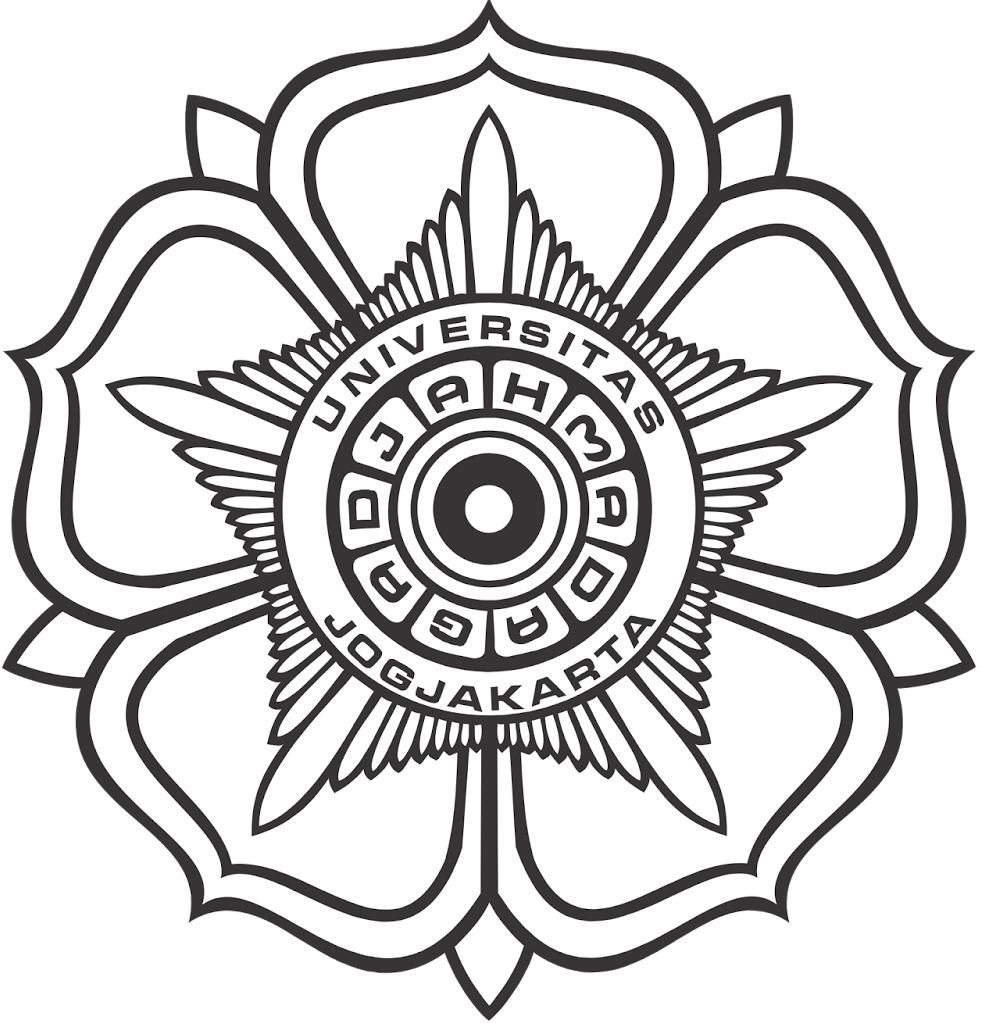Effect of cengkeh leaves and kayu manis cortex essential oils blend as anti dental plaque
Abstract
Dental plaque is a mouth cavity health problem related to microbial biofilm, where Streptococcus mutans is predominant. Adding of essential oils blend in mouthwash has been reported to increase the dental plaque inhibitory activity. The essential oils of clove leaves (Syzygium aromaticum (L.) Merr. & Perry) and cinnamon cortex (Cinnamomum burmanniNees ex Bl.), are known as potential antibacterial and antibiofilm towards S. mutans. This research aims were to reveal the influence of blending the clove leaves and cinnamon cortex essential oils in antibacterial and anti biofilm activity against S. mutans and to find out the optimum composition. Antibacterial assay was performed in nutrient broth media, on microplate flat-bottom polystyrene 96 wells. Biofilm formation inhibition and degradation assays were done in BHI + 2 % sucrose on microplate flexible U-bottom PVC 96 wells. Crystal violet1 % was used to stain the biofilm and Optical Density(OD) was measured at λ 595 nm. Simplex Lattice Design formula was used to calculate the blend optimum composition. TLCbioautography and GC-MS assays were done to revealthe active substances. As conclusion, it was proven that blending the clove leaves and cinnamon cortex essential oils increased the antibacterial and biofilm degradation potency, but reduced the biofilm formation inhibitory effect against S. mutans. The optimum composition of the essential oils blend was 27:73 (% v/v). From our results we suggest that the clove leaves and cinnamon cortex essential oil blend used in this study be developed as anti dental plaque.
Key words : clove leaves, cinnamon cortex, essential oils blend, Streptococcus mutans
Full Text:
PDF 191-201References
Bolton, S., 1997, Pharmaceutical Statistics: Practical and Clinical Applications, 3rd Ed., MarcellDekker Inc. New York, 590-625.
Cox, S. D., Mann, C. M., and Markham, J. L., 2001, Interactions between Components of the Essential Oil of Melaleuca alternifolia,Journal of Applied Microbiology, 91 (3), 492-497.
Davidson, P. M., 2001, Chemical Preservatives and Naturally Antimicrobial Compounds cit Celikel, N. and Kavas, G., 2008, Antimicrobial Properties of Some Essential Oils Against Some Pathogenic Microorganisms, Czech J. Food Sci., 26 (3), 174-181.
Gibbons, S., and Gray, A. I., 1998, Isolation by Planar Chromatography. In: Cannell, R.J.P. (Ed.), Natural Product Isolation, Totowa, Humana Press, New Jersey, 209-245.
Guenther, E., 1987, Minyak Atsiri, Jilid I. Diterjemahkan oleh Ketaren, S., UI Press, Jakarta, 170-183, 296-297
Hertiani, T., Pratiwi, S. U. T., and Kuswahyuning, R., 2009, Eksplorasi Minyak Atsiri sebagai Alternatif Bahan Aktif Pasta Gigi Anti Plak Berdasarkan Aktivitas Antibakteri dan Inhibitor Biofilm pada Streptococcus mutans secara In Vitro, Laporan Penelitian Program Hibah Penelitian Berkualitas Prima, Fakultas Farmasi UGM, Yogyakarta.
Jellinek, J. S., 1970, Formulation and Function of Cosmetics, diterjemahkan oleh Fenton, G.L., John Wiley Intescince, New York, 261.
Khan, M. S., Zahin, M., Hasan, S., Husain, F.M., and Ahmad, I, 2009, Inhibition of Quorum Sensing Regulated Bacterial Functions by Plant Essential Oils with Special Reference to Clove Oil, Letters in Applied Microbiology, 49 (3), 354-60.
Li, R. C. and Tang, M. C., 2004, Post-Antibiotic Effect Induced by an Antibiotic Combination: Influence of Mode, Sequence and Interval of Exposure, Journal of Antimicrobial Chemotheraphy, 54, 904-908.
Marsh, P., 2006, Dental Plaque as a Biofilm and a Microbial Community – Implications for Health and Disease, BMC Oral Health, 6 (Suppl 1), 514.
Niu, C. and Gilbert, E. S., 2004, Colorimetric Method for Identifying Plant Essential Oil Components that Affect Biofilm Formation and Structure, Applied and Environmental Microbiology, 70(12), 6951-6956.
O’Toole, G. and Kolter, R., 1998, Initiation of Biofilm Formation in Pseudomonas fluorescens WCS365 Proceeds via Multiple, Convergent Signaling Pathways: A Genetic Analysis, Molecular Microbiology, 28(3), 449-461.
Ouhayoun, J. P., 2003, Penetrating the Plaque Biofilm: Impact of Essential Oil Mouthwash, J.of Clinical Periodontology, 30 (Suppl 5), 10-12.
Pan, P. H., Finnegan, M. B., Sturdivant, L., and Barnett, M. L., 2003, Comparative Antimicrobial Activity of an Essential Oil and an Amine Fluoride/Stannous Fluoride Mouthrinse In Vitro, J. of Clinical Periodontology, 26 (7), 474-476.
Quave, C. L., Plano, L. R. W., Pantuso, T., and Bennett, B. C., 2008, Effects of Extracts from Italian Medicinal Plants on Planktonic Growth, Biofilm Formation and Adherence of Methicillin-Resistant Staphylococcus aureus, J. of Ethnopharmacology, 118 (3), 418–428.
Shulman, S.T., Phair, J.P., Sommers, H.M., 1994, Dasar Biologis dan Klinis Penyakit Infeksi, diterjemahkan oleh Wahab, A.S., Edisi IV, 152-158, Gadjah Mada University Press, Yogyakarta.
Sikkema, J., de Bont, J. A. M., and Poolman, B., 1994, Interactions of Cyclic Hydrocarbons with Biological Membran, The J. of Biological Chemistry, 269 (11), 8022-8028.
Siswandono and Soekardjo, B., 1995, Kimia Medisinal, Airlangga Press, Surabaya, 249-259.
Wagner, H., and Bladt, S., 2001, Plant Drug Analyses: A Thin Layer Chromatography Atlas, 2nd Ed., Springer-Verlag, Berlin, 149-191
Zickert, I., Emilson, C. G., and Krasse, B., 1983, Correlation of Level and Duration of Streptococcus mutans Infection with Incidence of Dental Caries, Infection and Immunity, 39(2), 982-985.
DOI: http://dx.doi.org/10.14499/indonesianjpharm0iss0pp191-201
Refbacks
- There are currently no refbacks.
Copyright (c) 2017 INDONESIAN JOURNAL OF PHARMACY

This work is licensed under a Creative Commons Attribution-ShareAlike 4.0 International License.
Indonesian J Pharm indexed by:







































